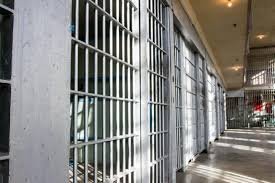By Paul Heaton
Today we know much more about the effects of pretrial detention than we did even five years ago. Multiple empirical studies have emerged that shed new light on the far-reaching impacts of bail decisions made at the earliest stages of the criminal adjudication process.1 This new evidence calls into question longstanding approaches to managing pretrial risk that provide limited due process protection and emphasize cash bail. Making appropriate decisions about who to release pretrial and under what conditions requires an understanding of the impacts of particular bail requirements. For example, for a given defendant, how would their risk of failure to appear (“FTA”) or future criminal activity change if they were subjected to condition A (which might include preventative detention) versus condition B (which might include an alternative to detention, such as text message reminders of scheduled court appearances)? Armed with such information, decisionmakers could appropriately balance society’s dual interest in preserving public safety and holding the accused accountable with defendants’ liberty interests. However, until recently, the actual evidence necessary to analyze the trade-off described above has been virtually nonexistent, leading judges and magistrates to rely on a combination of personal experience (possibly including conscious or unconscious bias), heuristics, and local norms in formulating their bail decisions. One reason it has been so difficult to develop good evidence of the effects of pretrial detention is because the bail system, when operating as intended, sorts defendants in a manner that limits the value of the outcome data it produces for demonstrating whether and how bail conditions matter. In general, because bail conditions are typically assigned based on perceived defendant risk, if we observe elevated violation rates for defendants with condition A versus condition B, it is difficult to determine empirically whether this reflects an adverse causal effect of condition A or simply the fact that those assigned condition A were different from those assigned condition B to begin with. For example, proponents of cash bail often cite low FTA rates among those released with assistance from commercial bonding agents and argue from such statistics that private bondsmen are a necessary component of the system to manage nonappearance risk.2 However, comparing FTA rates for those with and without commercial sureties is misleading. To maximize profits, commercial operations have an incentive to accept only clients who are at low risk of nonappearance in the same way that an auto insurer would make money by identifying and then insuring only the safest drivers.3 Thus, low FTA rates might simply reflect defendant sorting and tell policymakers little about commercial sureties’ effectiveness. The new generation of pretrial detention studies addresses this difficulty and provides a much stronger footing on which to base legal decisions and criminal justice policy. Recent studies improve upon past work in at least three respects. First, they make use of large administrative datasets, typically involving the near universe of criminal offenses within a particular jurisdiction, allowing researchers to describe the functioning of the criminal justice system as a whole rather than generalizing from a few specific incidents or cases. Second, they carefully consider the problem of differentiating correlation from causation, making use of natural experiments to measure the causal effects of detention and resolving the sorting problem described above. Finally, they consider a broader range of outcomes, focusing not just on the resolution of the case at hand, but on long-term ramifications, such as future criminal activity, earnings, and unemployment. The takeaway from this new generation of studies is that pretrial detention has substantial downstream effects on both the operation of the criminal justice system and on defendants themselves, causally increasing the likelihood of a conviction, the severity of the sentence, and, in some jurisdictions, defendants’ likelihood of future contact with the criminal justice system. Detention also reduces future employment and access to social safety nets. This growing evidence of pretrial detention’s high costs should give impetus to reform efforts that increase due process protections to ensure detention is limited to only those situations where it is truly necessary and identify alternatives to detention that can better promote court appearance and public safety.
United States, North Carolina Law Review. 2020, 11pg





